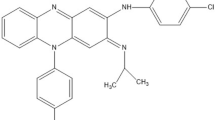Abstract
Quality risk assessment and design of experiment (DoE)-based quality by design (QbD) approach has been applied for the development of a stability-indicating assay method for acidic degradation kinetic study of apremilast. Quality risk assessment started with the identification of risk factors for method development by preliminary experimentation, prior knowledge of chromatography, and brainstorming process. The identified risk factors were properly categorized and listed in fishbone diagram. Risk assessment was done by allotment of risk priority number (RPN) score to each risk factor based on preliminary experimentation. From the assessment of risk factors, the identified risk factors were checked for their main effects on resolution and tailing factors by Taguchi design. Critically identified risk factors were studied for effect on critical quality attributes by DoE-based Box–Behnken design. Method operable design region (MODR) was navigated for optimization if risk factors and control strategy were set for desired output. The separation was performed using toluene–ethyl acetate–methanol (7:1:2, v/v) on aluminum plate pre-coated with silica gel G F254. The method was validated as per the International Conference on Harmonization (ICH) Q2R1 guideline. The developed method was applied for forced degradation and acidic degradation kinetic study at different stress conditions. The degradation kinetics was found to follow the first order.











Similar content being viewed by others
References
Drugbank. https://www.drugbank.ca/drugs/DB05676. Accessed: 20 April 2019
Bubna AK (2016) Apremilast: a dermatologic perspective. Indian J Drugs 2:75–82. Dermatol. https://doi.org/10.4103/2455-3972.196166
Gordon KB, Ruderman EM (2005) Psoriasis and psoriatic arthritis an integrated approach. Springer-Verlag, Berlin
Snehalatha K, Ravindranathan R, Sriram DK, George M (2018) Utility of apremilast in the treatment of psoriasis. Int J Basic Clin Pharmacol 7(8). https://doi.org/10.18203/2319-2003.ijbcp20183013
Cauli A, Porru G, Piga M, Vacca A, Dessole G, Mathieu A (2014) Clinical potential of apremilast in the treatment of psoriatic arthritis. Immunotargets Ther 3:91–96 10.2147%2FITT.S40199
Prajapati PB, Partiwala C, Bodiwala KB, Marolia BP, Shah SA (2015) Alkaline degradation kinetic study of thiocolchicoside by stability indicating high performance thin layer chromatographic method. J Liq Chromatogr Relat Technol 38:1767–1782. https://doi.org/10.1080/10826076.2015.1107579
Martin A, Swarbrick J, Cammarata A (2001) Physical pharmacy principles in the pharmaceutical science, 4th edn. Lippincott Williams and Wilkins, Philadelphia
Panchumarthi R, Sulthana S, Srinivasa P (2017) Development and validation of stability-indicating UV spectrophotometric method for determination of apremilast in bulk and pharmaceutical dosage form. Indian J Biotech Pharm Res 5:47–53
Lonkar NA, Dole MNS, Sawant SD (2017) Development and validation of UV-spectrophotometric method for the estimation of apremilast in bulk form by absorbance maxima method. World J Pharm PharmSci 7:758–766
Kulsum S, Sagar VG, Butul A, Fatima S, Uddin S (2016) Method development and validation of forced degradation studies of apremilast by using UV–spectrophotometric method. World J Pharm Pharm Sci 5:1595–1601. https://doi.org/10.20959/wjpps20166-6945
Chakravarthy AV, Shailja BBV, Kumara P (2017) Method development and validation of ultraviolet-visible spectroscopic method for the estimation of assay of sugammadex sodium, apremilast, riociguat, and vorapaxar sulfate drugs in active pharmaceutical ingredient form. Asian J Pharm Clin Res 10(2). https://doi.org/10.22159/ajpcr.2017.v10i2.15502
Panchumarthi R, Sulthana S, Kamma H (2017) Development and validation of a stability-indicating reversed phase HPLC method for determination of apremilast in bulk and pharmaceutical dosage form. Pharm Lett 9:63–73
Anerao A, Telange V, Bondre N, John S, Gathave T (2017) Stability-indicating related substances method of apremilast by HPLC and synthesis and characterization of related impurities using mass and NMR spectroscopy. Int J Curr Med Pharm Res 2:1378–1385. https://doi.org/10.4236/ajac.2017.86029
Landge SB, Dahale SB, Jadhav SA, Solanki PV, Bembalkar SR, Mathad VT (2017) Development and validation of stability indicating rapid RP-LC method for determination of process and degradation related impurities of apremilast, an anti-inflammatory drug. Am J Anal Chem 8:380–394. https://doi.org/10.4236/ajac.2017.86029
Lonkar NA, Sawant DS, Dole MN (2017) Development and validation of stability indicating RP-HPLC method for the estimation of apremilast by forced degradation studies. World J Pharm Pharm Sci 4:1493–1502. https://doi.org/10.20959/wjpps20174-8934
Yuting L, Xiaoyue S, Taijun H, Min S (2017) Identification and characterization of process-related substances and degradation products in apremilast: process optimization and degradation pathway elucidation. J Pharm Biomed Anal 141:70–78. https://doi.org/10.1016/j.jpba.2017.03.067
Chaudhri SR, Shrirkhedkar AA (2018) Application of Box–Behnken design for validation of high performance thin-layer chromatography/densitometry method for robustness determination of apremilast in bulk and in-house tablets. Pharm Methods 9:9–15. https://doi.org/10.5530/phm.2018.1.3
International Conference on Harmonization (ICH) (2005) ICH harmonised tripartite guideline: validation of analytical procedures: text and methodology Q2 (R1), Geneva
Anderson MJ, Whitcomb PJ (2015) DOE simplified practical tools for effective experimental, 3rd edn. CRC Press, Taylor and Frances Group, Boca Raton
International Conference on Harmonization (ICH) (2005) ICH harmonised tripartite guideline: pharmaceutical quality system Q10, Geneva
Lewis GA, Mathieu D, Phan-Tan-Luu R (1998) Pharmaceutical experimental design. CRC Press, Boca Raton
Acknowledgments
The authors are thankful to Sun Pharmaceuticals, Vadodara, Gujarat, India, for providing the gift sample of apremilast and the Principal, Maliba Pharmacy College, for providing all the facilities to carry out the research work.
Author information
Authors and Affiliations
Corresponding author
Ethics declarations
Conflict of interest
The authors declare that they have no conflict of interest.
Additional information
Publisher's note
Springer Nature remains neutral with regard to jurisdictional claims in published maps and institutional affiliations.
Rights and permissions
About this article
Cite this article
Prajapati, P., Patel, H. & Shah, S. Quality risk assessment and DoE-based analytical quality by design approach to stability-indicating assay method for acidic degradation kinetic study of apremilast. JPC-J Planar Chromat 33, 231–244 (2020). https://doi.org/10.1007/s00764-020-00036-x
Received:
Accepted:
Published:
Issue Date:
DOI: https://doi.org/10.1007/s00764-020-00036-x




